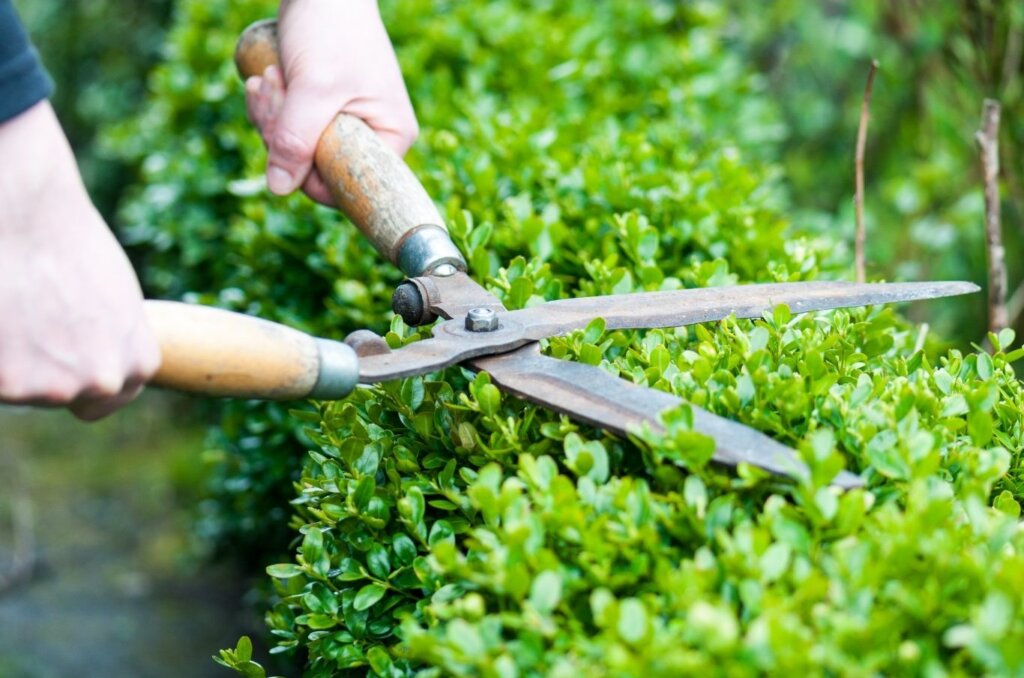Your garden is a sanctuary, a place of beauty and tranquillity. One of the key elements in creating a harmonious outdoor space is a healthy hedge. Hedges not only provide privacy and structure to your garden, but they also play a vital role in attracting birds and wildlife. In this ultimate guide to hedge care, I will explore the benefits of healthy hedges, share expert tips from the Royal Botanic Gardens Kew, and provide valuable advice on how to care for your hedging plants throughout the year. So, let’s dive in and discover why having a healthy hedge is of utmost importance.
Benefits of Healthy Hedges for Attracting Birds and Wildlife into the Garden
A healthy hedge is like a magnet for birds and wildlife. It provides a safe haven, a place to nest, and a source of food. The dense foliage of a well-maintained hedge offers protection from predators and serves as a shelter during extreme weather conditions. Additionally, hedges act as natural corridors, allowing animals to move freely between gardens, creating a network of interconnected habitats.
To maximize the wildlife-attracting potential of your hedge, it is essential to select the right species of plants. Native shrubs and trees are particularly effective in attracting local bird species and beneficial insects. Consider planting hawthorn, blackthorn, or hazel, which provide berries and nuts as a valuable food source. By cultivating a healthy hedge, you are not only enhancing the biodiversity of your garden but also contributing to the conservation of local ecosystems.
Hedge Care Tips from Our Eco-Friendly Experts at Royal Botanic Gardens Kew
The experts at the Royal Botanic Gardens Kew are passionate about environmentally friendly gardening practices. They emphasize the importance of regular hedge maintenance to ensure its longevity and health. Here are some valuable tips they recommend:
- Pruning: Regular pruning is vital for maintaining the shape and density of your hedge. It is best to prune in late winter or early spring before the start of the growing season. This encourages healthy growth and prevents the hedge from becoming too dense, which can lead to disease and pest infestations.
- Watering: Adequate watering is crucial, especially during dry periods. Young hedges require more frequent watering until they establish deep root systems. However, be cautious not to overwater, as excessive moisture can lead to root rot.
- Feeding: To promote healthy growth, it is advisable to feed your hedge with a balanced fertilizer in early spring. This provides the necessary nutrients for vibrant foliage and vigorous development.
By following these tips, you can ensure that your hedge remains healthy, attractive, and a haven for wildlife.
How to Take Care of Your Hedging Plants in Winter
Winter can be a challenging time for hedge care, as harsh weather conditions and frost can cause damage. However, with proper care, you can protect your hedging plants and ensure their survival through the colder months. Here are a few essential winter care tips:
- Mulching: Apply a layer of organic mulch around the base of your hedge to insulate the roots and retain moisture. This will help prevent freezing and thawing cycles that can damage the roots.
- Windbreaks: Erect temporary windbreaks around young or vulnerable hedges to shield them from strong winds. This will minimize the risk of branches breaking or being damaged.
- Avoid Pruning: While regular pruning is essential for hedge maintenance, it is advisable to avoid heavy pruning during winter. Pruning stimulates new growth, which can be sensitive to cold temperatures and increase the risk of damage.
Taking these precautionary measures during winter will ensure that your hedging plants remain healthy and resilient, ready to flourish when the warmer months arrive.
The Best Time of Year to Prune a Hedge
Pruning is a fundamental aspect of hedge care, but knowing the right time to prune is crucial to maintain its health and appearance. The best time for hedge pruning depends on the species and purpose of the hedge. Here are some general guidelines:
- Formal Hedges: For formal hedges that require a neat and tidy appearance, it is recommended to prune twice a year. The first pruning should be in late winter or early spring, before the onset of new growth. The second pruning should take place in late summer to maintain the desired shape.
- Flowering Hedges: If your hedge consists of flowering shrubs, it is important to prune after the flowering period. This preserves the buds for the following year and ensures a vibrant display of blooms.
- Evergreen Hedges: Evergreen hedges can be pruned throughout the year to maintain their shape and density. However, it is advisable to avoid heavy pruning during winter, as it may result in damage due to cold temperatures.
By understanding the specific requirements of your hedge and pruning at the appropriate times, you can promote healthy growth and maintain its overall vitality.
Choosing the Right Hedge for Your Garden
Selecting the right hedge for your garden is a crucial decision that will impact its aesthetics and functionality. Consider the following factors when choosing a hedge:
- Purpose: Determine the purpose of your hedge. Is it primarily for privacy, ornamental purposes, or to attract wildlife? This will help you select the appropriate species and characteristics.
- Size and Growth Rate: Consider the available space in your garden and the desired height and width of the hedge. Some species, such as leylandii, can grow rapidly and require frequent maintenance.
- Soil and Climate: Take into account the soil type and climate conditions in your area. Certain species thrive in specific environments, so choose one that is well-suited to your garden’s conditions.
Consult with local nurseries or horticultural experts for guidance on the most suitable hedge species for your specific requirements. This will ensure that your hedge thrives and enhances the overall beauty of your garden.
Tools and Equipment Needed for Hedge Care
Maintaining a healthy hedge requires the right tools and equipment. Here are the essential tools you will need:
- Hand Pruners: Hand pruners, also known as secateurs, are essential for precise trimming and shaping of smaller branches.
- Hedge Shears: Hedge shears are designed specifically for trimming hedges. Choose a high-quality pair with sharp blades for efficient and clean cuts.
- Ladders: Depending on the height of your hedge, a sturdy ladder may be necessary to access the upper portions for pruning and maintenance.
- Gloves and Protective Clothing: Protect your hands and body from thorns, scratches, and irritants with a good pair of gardening gloves and appropriate clothing.
Investing in quality tools will make hedge care easier and more effective, ensuring that your hedge remains healthy and visually appealing.
Common Hedge Care Mistakes to Avoid
While hedge care may seem straightforward, there are common mistakes that gardeners often make. By being aware of these pitfalls, you can avoid them and maintain a healthy hedge. Here are a few mistakes to steer clear of:
- Overpruning: Excessive pruning can weaken the hedge and lead to sparse growth. Follow the recommended pruning guidelines for your hedge species.
- Improper Watering: Overwatering or underwatering can be detrimental to the health of your hedge. Strike a balance and water according to the specific needs of your plants.
- Neglecting Pest and Disease Control: Regular inspection for pests and diseases is crucial. Early detection and appropriate treatment can prevent significant damage to your hedge.
By avoiding these common mistakes, you can ensure that your hedge thrives and remains a vibrant part of your garden.
Eco-Friendly Practices for Hedge Care
In our quest for a healthy hedge, it is important to adopt eco-friendly practices that promote sustainability and protect the environment. Here are some tips to make your hedge care more environmentally friendly:
- Composting: Use organic matter, such as hedge clippings, leaves, and grass cuttings, to create nutrient-rich compost. This can be used to feed your hedge and other plants in your garden.
- Water Conservation: Collect rainwater in a water butt to use for watering your hedge. This reduces water consumption and promotes sustainable gardening practices.
- Natural Pest Control: Embrace natural methods of pest control, such as introducing beneficial insects or using organic pest repellents. Avoid the use of chemical pesticides that can harm beneficial insects and disrupt the ecosystem.
By incorporating these eco-friendly practices into your hedge care routine, you contribute to the preservation of the environment and create a healthier, more sustainable garden.
Conclusion
Having a healthy hedge is not only aesthetically pleasing but also beneficial for attracting birds and wildlife into your garden. By following the expert tips from the Royal Botanic Gardens Kew and understanding the specific needs of your hedge, you can ensure its health and longevity. From choosing the right species to employing eco-friendly practices, each step in hedge care contributes to the overall beauty and biodiversity of your garden. So, embrace the importance of a healthy hedge and create a thriving outdoor sanctuary that you and nature will enjoy.





